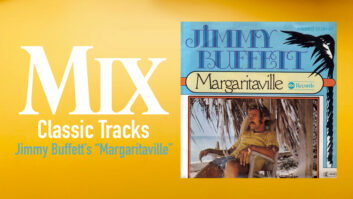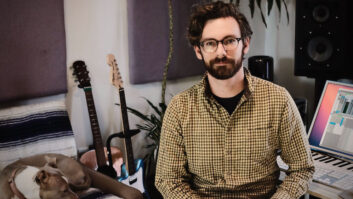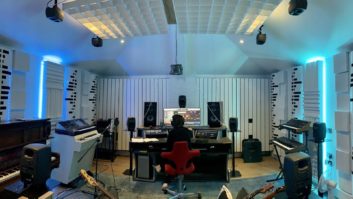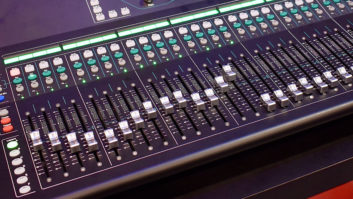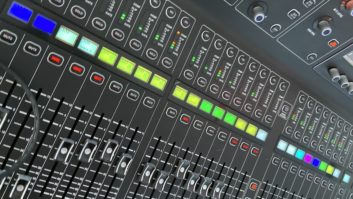Malibu, CA (November 18, 2019)—Michael Marquart wears many hats, in addition to the one in which he is typically photographed. Most recently he’s been wearing his artist’s hat as he celebrates the release of his seventh album under the name A Bad Think—a double-disc release entitled The Saviour.
“It didn’t start out being a concept album, but as I was writing, I found a common thread that started to lace through these songs. It just happened organically,” says Marquart. He ended up with nine songs on each disk, a collection that integrates ambient, Americana, classical, lo-fi acoustic and hard rock. (He has previously described his style as “a cross between Beck and Pink Floyd.”) In a nutshell, he says, “It chronicles the rise and fall of this young guy who winds up being a reluctant king.”
Marquart’s list of accomplishments can instill feelings of inadequacy. Beside obviously being a songwriter, he’s a multi-instrumentalist, adept at drums (he played with A Flock of Seagulls in the late ’80s), guitar and keyboards, and is a singer. He’s also an engineer, mixer and producer, and a studio owner, most notably of Windmark Recording in Santa Monica, CA, where the likes of Rihanna, Maria Carey and Drake have recorded. He also has two private production facilities, one at his house in Virginia Beach, VA, the other, The Barn, at his home in Malibu.
His creative process on this album, recorded initially in Malibu and Virginia Beach, he says, is typical of previous projects. “I write the songs and put down a finished drumbeat, or just a beat guide if I hear a real drummer, a couple of guitar parts and a couple of keyboard parts. If I like my voice [for a specific song], I do finished vocals. I’ll also add harmony ideas,” if planning to overdub another vocalist, he says.
Despite his abilities behind the kit and the ready availability of studios in which to record drums, Marquart never picked up a stick for this project. “There are no acoustic drums on the album; I programmed all the drums,” he reveals. “I know what I would play if it was me playing, so I wrote it all in by hand, note by note.”
While holding down the roles of writer, musician, engineer and producer on this project, Marquart also called on numerous other collaborators. Bob Clearmountain mixed the album in stereo and 5.1 at his Mix This! studio and Bob Ludwig mastered it at his Gateway facility. Further upstream, additional musicians joined Marquart at Dave Way’s Waystation Studio in Beverly Hills to flesh out the arrangements.
“The groove and the tempo are pretty much there, and the vibe and the form, so you’re hearing what the song is,” says Way, who worked with Marquart on his previous album. “You can start to fill in ideas as they come to you, even on first listen.”
Way recommended a variety of instrumentalists, some of whom also worked on the last album, such as lap and pedal steel player Greg Leisz. “Michael really loved his playing,” says Way. “And a guitarist who came to my mind, because I’d been working with him recently, was Fernando Perdomo. He loves prog rock and he’s got a style, particularly with soloing, that I thought would be a great match. He’s a bundle of ideas.”
Sean Hurley contributed bass. “He’s a great studio cat and gigs with John Mayer,” Way reports.
“I know Phil Shenale from working on the Sons of Anarchy music. He has a lot of orchestral experience through working with Tori Amos. He’s got an amazing studio that allows him to go to town in his little laboratory. We’d send him tracks and he’d come up with these amazing keyboard textures and sounds. We also brought in Craig Eastman, who does a lot of film work, to layer in some real strings under the fake ones.”
They flew in Jazz Mills from Austin to add vocals. “She’s not an experienced studio background singer,” says Way, who worked with her on an album recently, “but I thought her voice, which is pure and almost old fashioned, would suit the mood. She’s a great harmonizer.”
“There were so many fascinating elements in the recordings to use and place,” says Clearmountain of his stereo mixes. “Plus, the arrangements were very open with lots of space for me to add subtle—and some not so subtle—environmental effects and reverbs. All these elements together created a feeling of depth and width in stereo.”
Clearmountain, who has mixed innumerable 5.1 projects at his studio, immediately heard the potential in Marquart’s tracks for a surround version and got to work. “Dave and I went over to Bob’s studio in the Palisades,” Marquart recalls. “I listened to it and said, this album should only be heard in this kind of environment. I was all-in after I heard it.”
The 5.1 mixes are essentially the same as the stereo versions, says Clearmountain. “But the panning is somewhat different, as there are five channels instead of two, so there’s much more to have fun with, plus a sub for extra bass, bass drum, toms and other things. I’d often add four-channel reverbs to many elements, and delays from stuff in the front, returning in stereo to the rear channels.”
Clearmountain sent lead vocal, snare, bass, bass drum and featured instruments to the center channel, he says. “But often I’ll place instruments halfway between left and center or right and center. I’ll often use a bit of divergence for the lead vocal, so it would mainly be in the center but also in the left and right, down about 10 or 12 dB. I’ll often do that with bass and bass drum as well, besides adding them into the LFE.”
“We’re already planning on recording the next album for a Dolby Atmos mix,” reports Way. “If you think in terms of arrangements and the placement of things, that’s exciting. We’re going completely down the immersive audio wormhole.”
“It’s really inspiring,” says Marquart of the immersive format. “It’s just going to be a matter of how creative you can be, like it used to be back in the ’70s. It’s exciting.”
A Bad Think • www.abadthink.com
Waystation • www.daveway.com
Mix This! • www.mixthis.com

